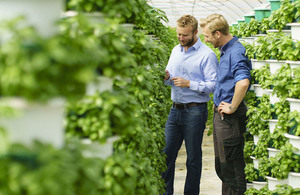The MOD will work across Government and closely with industry and international partners to explore the UK’s future Combat Air capabilities, building on the Industrial Strategy and refreshed Defence Industrial Policy launched last year.
The strategy will examine the operational capability needed in the future and the skills and resource required to deliver it. The work will take new and emerging technology into account, as well as export potential, whilst testing British industry’s ability to deliver our future requirements. It is expected to be launched in the summer.
Defence Secretary Gavin Williamson said:
Since the birth of airpower, British industry has been crucial to maintaining our military’s world-leading position. As we celebrate 100 years of the RAF protecting our skies, it is fitting that we create bold and ambitious plans to help our brave Armed Forces keep us safe in the face of intensifying threats. The Combat Air Strategy will bring together the best of British engineering, skill and design, and deliver a compelling vision for the future of air power.
Chief of the Air Staff, Air Chief Marshal Sir Stephen Hillier, said:
It is especially fitting that we launch the Combat Air Strategy as our Royal Air Force marks its 100th anniversary. Combat Air capabilities have been at the heart of the RAF’s capabilities throughout its history, and are constantly employed on operations across the world today.
This strategy will ensure that the RAF can continue to remain at the forefront of the high-end airpower technology and innovation we need to deal with future threats, working in close collaboration with UK industry and our international partners.
The UK is already a world-leader in the air sector which accounts for 85% of the Britain’s defence export orders. The industry is made up of close to 2,500 companies, generating more than £33.5bn in turnover and employing more than 128,000 people – some 26,000 of them in highly skilled research, design and engineering jobs.
Investment in combat air technology combined with the strengths of UK industry has resulted in the UK being the US’ only Tier 1 partner on the F-35 Lightning II programme, with British industry building around 15% of every F-35 which is built. The UK has been able exploit the operational capabilities of the aircraft, while reinforcing UK industrial capability, skills and wider economic prosperity.
The UK also continues to lead the way in combat air power as one of the four partner nations in the Eurofighter Typhoon programme. With more than 20,000 flying hours on global operations to date, the Typhoon has offered unparalleled reliability and proven interoperability with our allies.
The F-35 Lightning II and the Typhoon are two complimentary multi-role combat aircraft that will make up the RAF’s combat air fleet, placing the UK at the forefront of fighter jet technology – with the Typhoon expected to remain in UK service until at least 2040.
Just last week the UK led the bid to replace Belgium’s fighter jets with 34 Typhoons with the offer to include a comprehensive defence and industrial partnership between the Governments of Belgium and the UK. The Defence Secretary Gavin Williamson was also in Qatar at the end of last year to oversee Qatar’s multi-billion pound purchase of 24 Typhoon aircraft, supporting thousands of jobs across the UK.
The announcement of the strategy comes after an initial review of the defence aerospace sector by the MOD, which involved engaging across Government and with industry. The development of a Combat Air Strategy is consistent with the themes of the Modernising Defence Programme. It will set out in practical terms how the MOD can deliver its critical military capability requirements whilst considering wider economic and international factors, and our national security objectives.
 Agri-food tech company Saturn Bioponics’ Alex Fisher and Arnoud Witteveen.
Agri-food tech company Saturn Bioponics’ Alex Fisher and Arnoud Witteveen.